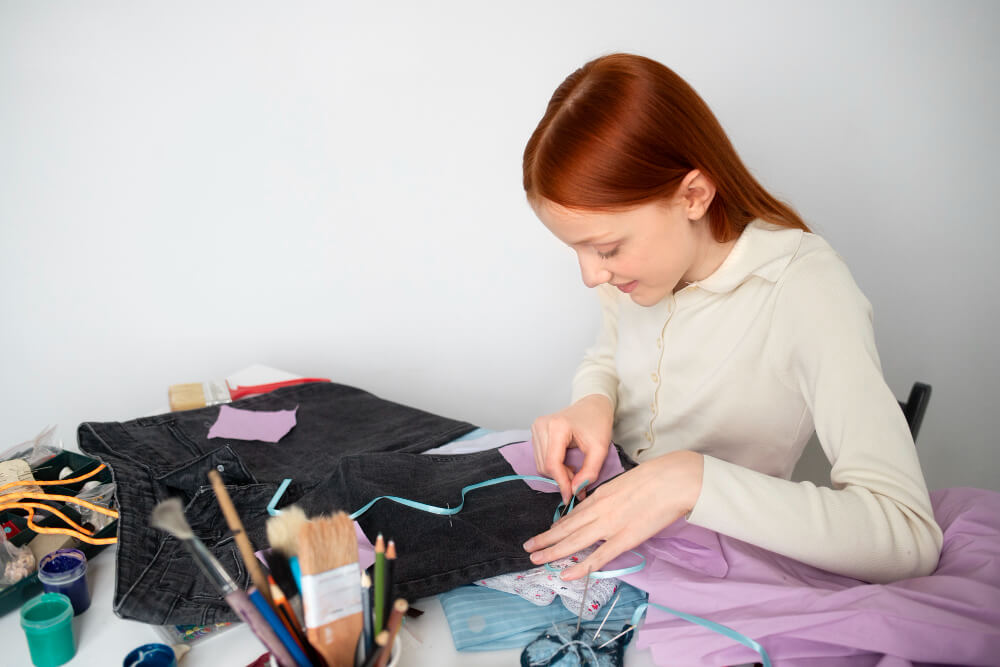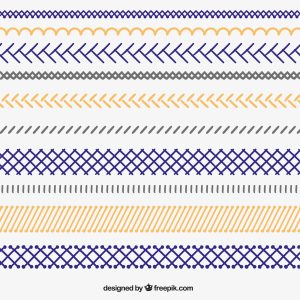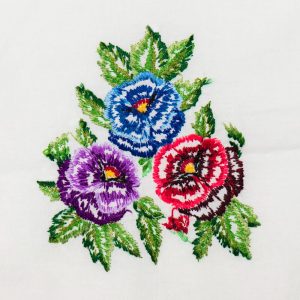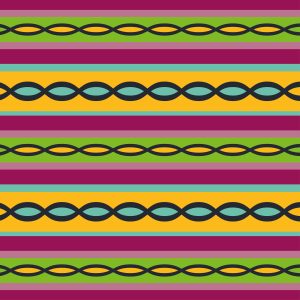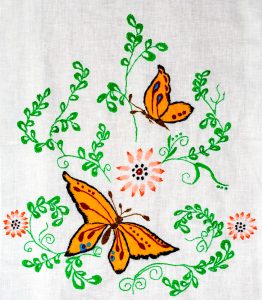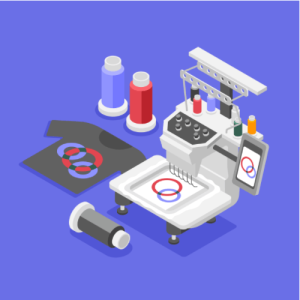Embroidery adds style, texture, and personality to clothing and accessories. But sometimes, you might want to remove it—maybe there’s a stitching error, a logo change, or you just want to reuse the fabric. Whatever the reason, removing embroidery safely is essential to prevent fabric damage. With insights from experts at Qualitycare Digitizing, here’s a complete guide to help you remove embroidery without ruining your material.
Here’s How to Remove Embroidery
Embroidery can be beautiful, but mistakes happen. If you need to remove it, patience and the right tools will make the job easier. The key is to protect your fabric during the process. Qualitycare Digitizing recommends taking your time, using proper tools, and understanding the fabric type before you begin.
Learn More About: Embroidery Digitizing Services
You’ll Need These Tools to Remove Embroidery
Before you start, make sure you have the proper tools. The right equipment ensures a clean, safe, and smooth removal.
- Seam Ripper: Perfect for cutting stitches cleanly and precisely.
- Tweezers: Helps pull out small, loose thread pieces after cutting.
- Magnifying Glass: Ideal for close inspection of tiny stitches and detailed work.
- Lint Roller: Removes leftover thread bits and fuzz once the embroidery is taken out.
- Iron and Pressing Cloth: Smooths the fabric after embroidery removal, helping it look fresh again.
Having these essentials ready ensures that your embroidery removal process is efficient and gentle on your material.
How to Remove Embroidery Step-by-Step
1. Examine the Embroidery Design
Start by closely inspecting the embroidery. Identify the stitch type, density, and placement. This helps you determine how to approach the removal without tearing the base fabric.
2. Work from the Backside
Flip the fabric and begin from the backside where the thread ends and knots are visible. This reduces visible front damage and gives you easier access to the base of the stitches.
3. Use a Seam Ripper Gently
Insert the seam ripper under a single stitch and cut carefully. Avoid pulling or forcing the fabric. Start with a small section, moving slowly. Rushing this step can lead to snags or small tears.
Learn More About: Vector Art Services
4. Pull Loose Threads with Tweezers
After cutting a few stitches, use tweezers to gently remove the loose threads. Work gradually in sections. Once all visible threads are removed, use a lint roller to clear any tiny remnants.
Patience is key—slow, steady movements protect the weave of your fabric.
Different Fabrics Require Different Approaches
Each fabric reacts differently when embroidery is removed. Here’s how to handle both delicate and sturdy materials safely.
Delicate Fabrics (Silk, Chiffon, Organza)
- Use a fine, sharp seam ripper to avoid pulling threads roughly.
- Avoid excessive pressure—gentle movements prevent tearing.
- Work under a magnifying glass if possible to ensure precision.
- Handle with care and take breaks if needed to avoid stretching the fabric.
Sturdy Fabrics (Denim, Canvas, Cotton Twill)
- You can apply a little more force but stay methodical.
- For thicker embroidery, cut a few stitches at a time before pulling.
- Avoid scraping the surface—cut instead of tearing threads.
- After removal, inspect the surface for any fraying or thinning.
Each material needs a balance between precision and pressure. Knowing the difference ensures cleaner results and minimal damage.
How to Take Care of Your Fabric After Removal
After removing embroidery, your fabric might have small holes or minor distortions. These post-removal care steps will help restore its original look:
- Iron with a Pressing Cloth: Lay a pressing cloth over the affected area and iron gently. This helps close needle holes and flatten the fibers.
- Wash Gently: A gentle wash can help reduce visible marks from stitches and relax the fibers.
- Re-Embroidery or Patch Cover: If the area looks damaged, consider adding new embroidery, a patch, or a printed design to cover imperfections stylishly.
Proper aftercare ensures your fabric stays smooth, fresh, and ready for reuse.
Bonus Tip: Use Caution with Machine Embroidery Removal
If you’re removing machine embroidery from thick garments or uniforms, work slowly. Machine stitches are often tighter and denser. Try loosening the thread tension first or use embroidery erasers made specifically for machine embroidery removal.
Avoid using blades directly on fabric unless absolutely necessary. If you’re unsure, consult professionals like Qualitycare Digitizing, who can provide guidance or restoration services.
Learn More About: Patch Services
Common Mistakes to Avoid
- Don’t Rush: Hurrying leads to tears and visible holes.
- Avoid Pulling Stitches Forcefully: Always cut before pulling.
- Don’t Skip the Ironing Step: It’s vital for repairing fiber alignment.
- Never Use Sharp Scissors Alone: Seam rippers are designed for precision—scissors can slice into fabric.
Avoiding these mistakes keeps your project safe and preserves the look of your material.
Conclusion: Master the Art of Removing Embroidery
Removing embroidery is a delicate process that requires patience, proper tools, and a careful approach. With these expert tips, you can safely take off embroidery without harming your fabric, allowing you to correct errors or repurpose garments easily.
For professional embroidery digitizing, artwork preparation, or design correction, turn to Qualitycare Digitizing. Their team understands every stitch—from creation to removal—and ensures your projects stay flawless from start to finish.
FAQs
How do you remove embroidery without damaging fabric?
Use a seam ripper and work slowly from the backside of the fabric. Avoid pulling threads forcefully and always iron afterward to repair fibers.
Can embroidery be completely removed?
Yes, embroidery can be removed entirely if done carefully. Some fabrics may show faint needle holes, but gentle washing and ironing can minimize them.
What’s the best tool to remove embroidery?
A seam ripper is the most effective tool because it cuts threads cleanly without harming fabric fibers.
How do I fix holes after embroidery removal?
Use a pressing cloth and iron the area to close holes. For visible damage, consider re-embroidering, patching, or adding decorative stitching.
Should I try removing machine embroidery myself?
If the embroidery is dense or complex, it’s best to seek help from professionals like Qualitycare Digitizing to avoid accidental fabric damage.

